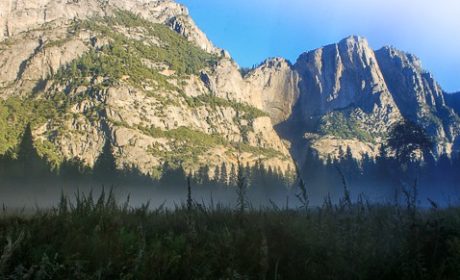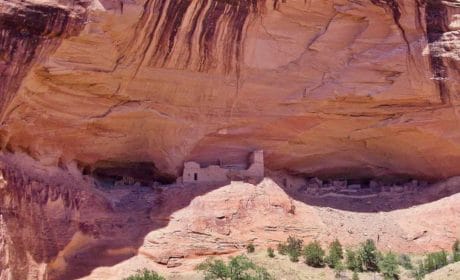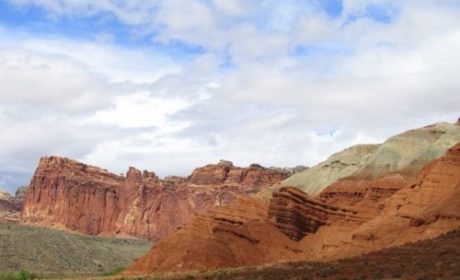Here’s a national park trip idea for you. This Death Valley 2 day itinerary will help you get the most out of America’s largest national park. There’s so much to see that it helps to have a plan for this region of California.
My Itchy Travel Feet featured contributor, Debi Lander (ByLanderSea) shares her tips for how to explore Death Valley in 2 days. You’ll discover the highlights as well as the lesser known things to see and do.
Perhaps like me, you recall from your childhood the television show Death Valley Days and their sponsor, 20-Mule Team Borax. The popular series ran from 1952-1970, becoming television’s longest-running western. I believe those memories nudged me to plan a trip to Death Vally National Park somewhere in my subconscious mind.
The diverse Death Valley region claims the highest recorded temperature on Earth (134 degrees) and receives just two inches of rain per year. It is the largest (also driest) national park in the lower 48, with an unbelievable 3.4 million acres and 1,000 miles of roadways.
That large size means plenty of room for active travel adventure but also many miles between points of interest. I chose the end of March to visit as Death Valley endures cold winters and scorching summers.
It’s best to visit between November and April. A summer trip to Death Valley National Park would not be for me.
Boomer Travel Tip
Starting June 2023, Death Valley National Park will go cashless for entrance fee payment and campground fees (payment by credit or debit card will be accepted). The best choice is to purchase your pass in advance here, if you don’t have the National Park Yearly Pass or Senior Pass.
Table of Contents
Getting to Death Valley
I flew to Las Vegas, met up with my travel buddy, Ellen, and picked up our rental car. We reserved a four-wheel-drive vehicle for our Death Valley itinerary from Las Vegas, which I highly recommend. This map was extremely helpful.
Our plan was to stop at Rhyolite Ghost Town on the way, so we chose the I-95 route. The drive to Rhyolite took about two and a half hours, plus our stop for lunch in Beatty, Nevada.
Stop at Rhyolite Ghost Town
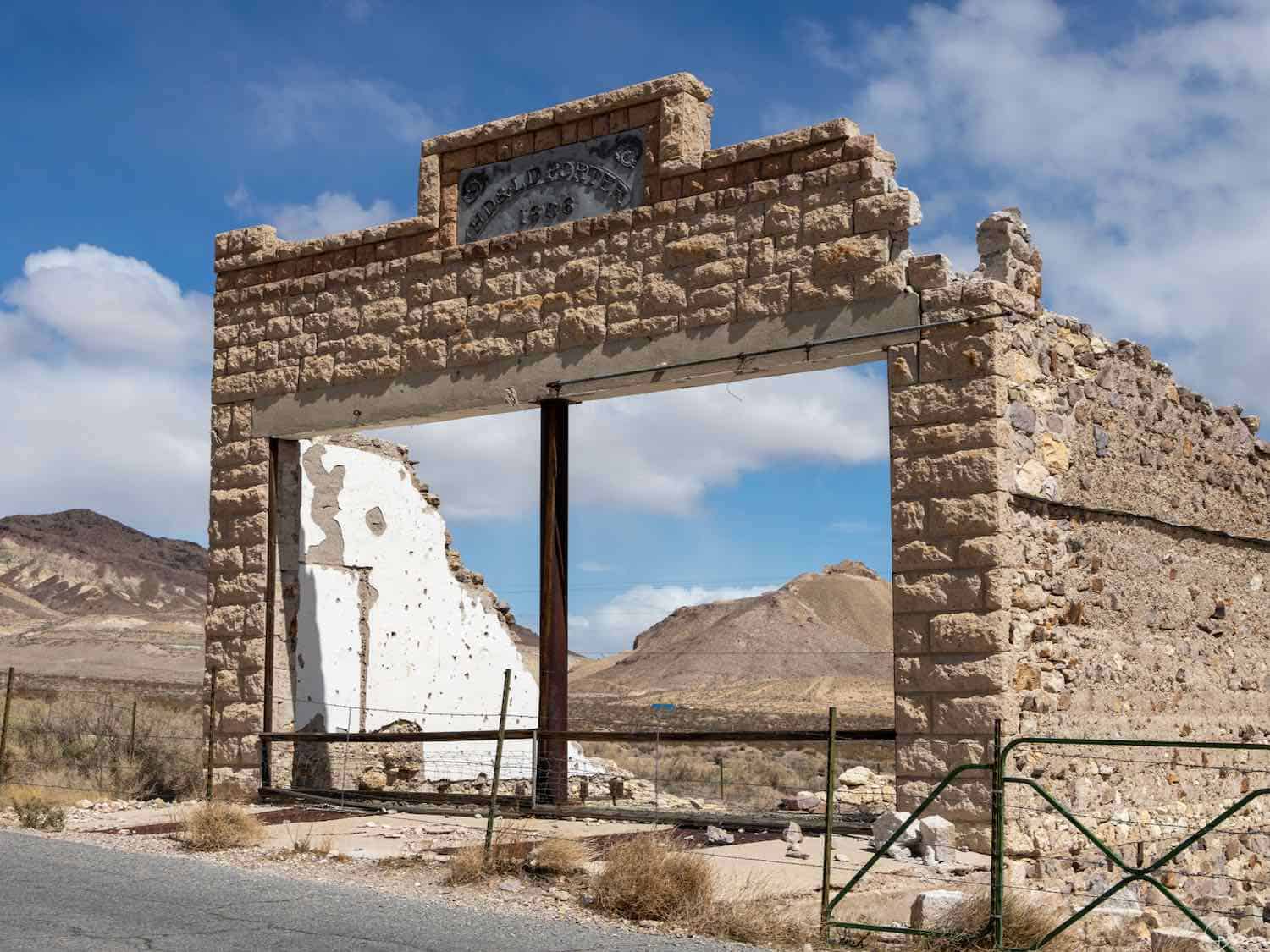
Rhyolite is downright strange! It offers dusty ruins of a small western boomtown that sprang to life in 1906 when valuable gold ore was discovered.
An estimated 5,000 people arrived in Rhyolite within six short months. The town eventually boasted 50 saloons, 35 gambling tables, 19 lodging houses, 16 restaurants, several barbers, a public bathhouse, and the Rhyolite Herald—a weekly newspaper.
But, it declined almost as rapidly as it arose when the high-grade ore began to diminish. The power company turned off Rhyolite’s electricity in 1914, and by 1920 only 14 people remained. Many of the buildings were torn apart, and the salvaged materials were moved elsewhere.
To preserve what is left, the old hotel (in my opinion the most photogenic building) unfortunately now rests behind fencing. But don’t miss the forlorn place and the old wooden train car.
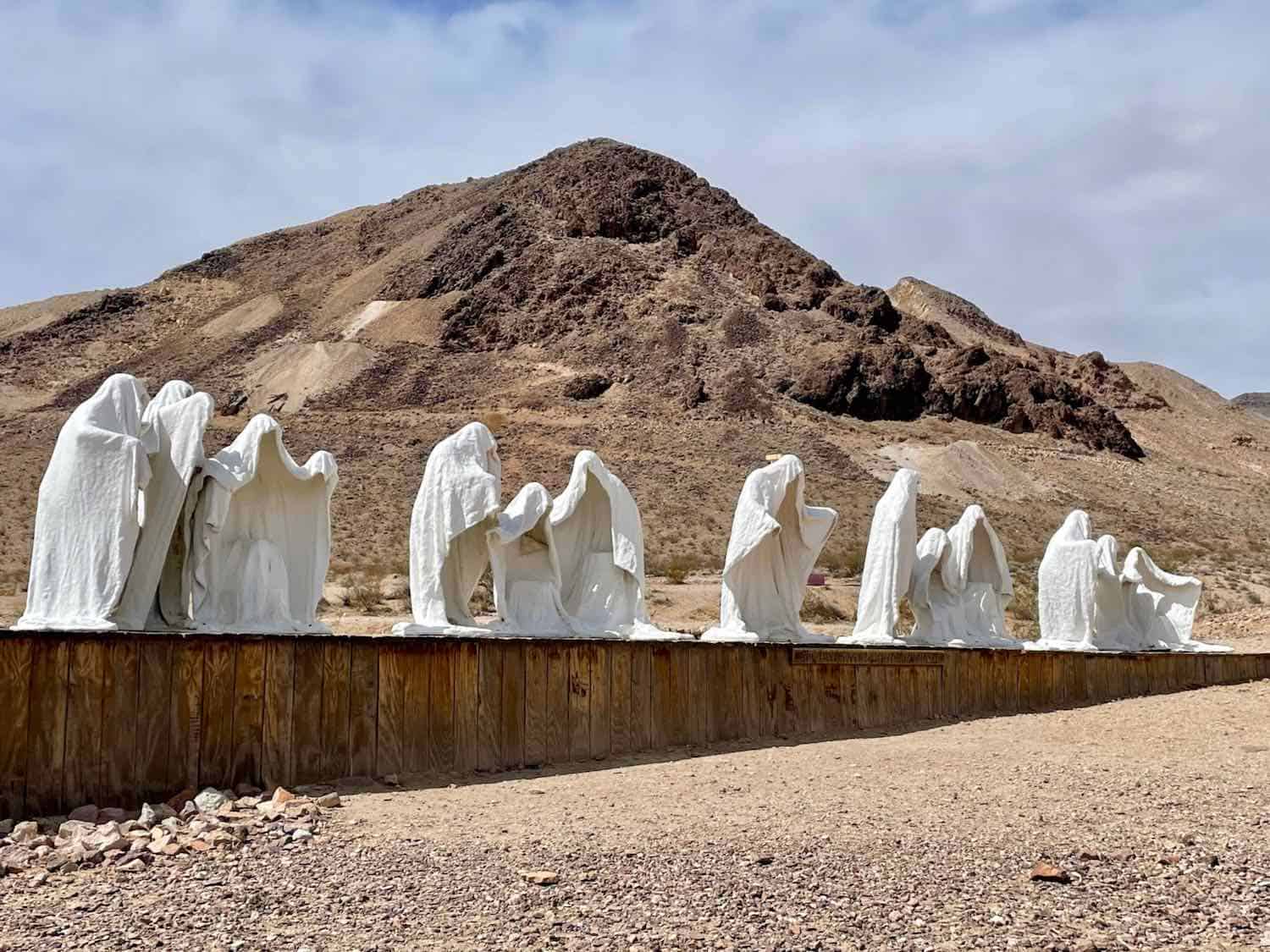
The most surprising find is an unusual artwork standing in the Goldwell Open Air Museum or sculpture garden. Artist Albert Szukalski created a fiberglass work inspired by DaVinci’s famous painting in 1984. His Last Supper features twelve ghostly figures dressed in white robes. It’s eerie but also captivating.
Stay at Furnace Creek
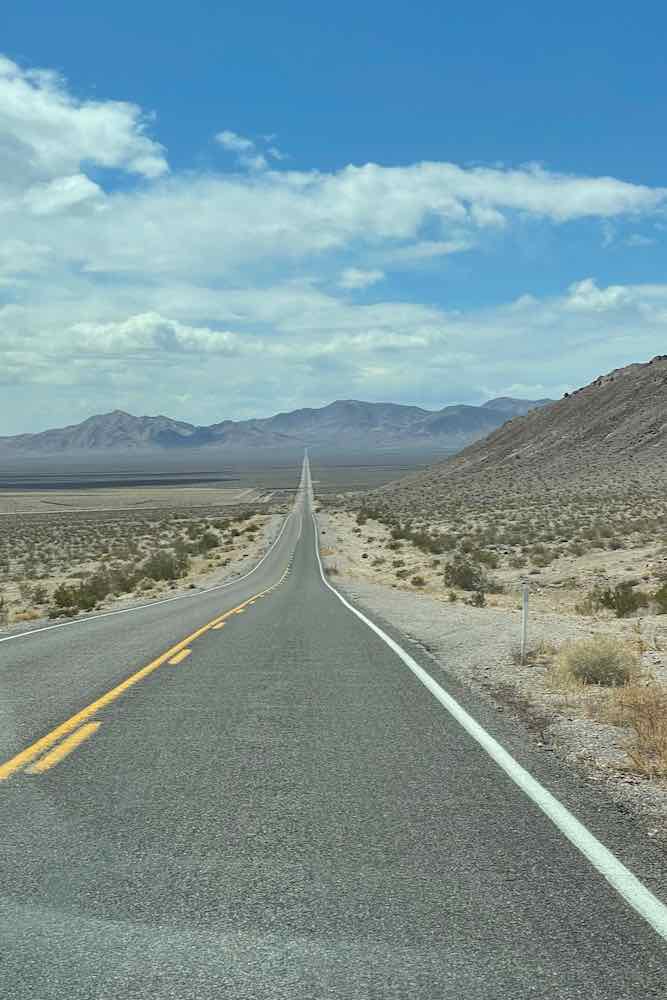
Leaving Rhyolite, you soon officially enter Death Valley National Park. Expect nothing but desolate wilderness on the 35-mile drive to the Furnace Creek area, where you’ll find the visitor center and ranger station.
Lodging choices are limited. Many families make reservations in the multiple RV parks and campsites (some are free), but that’s not my style.
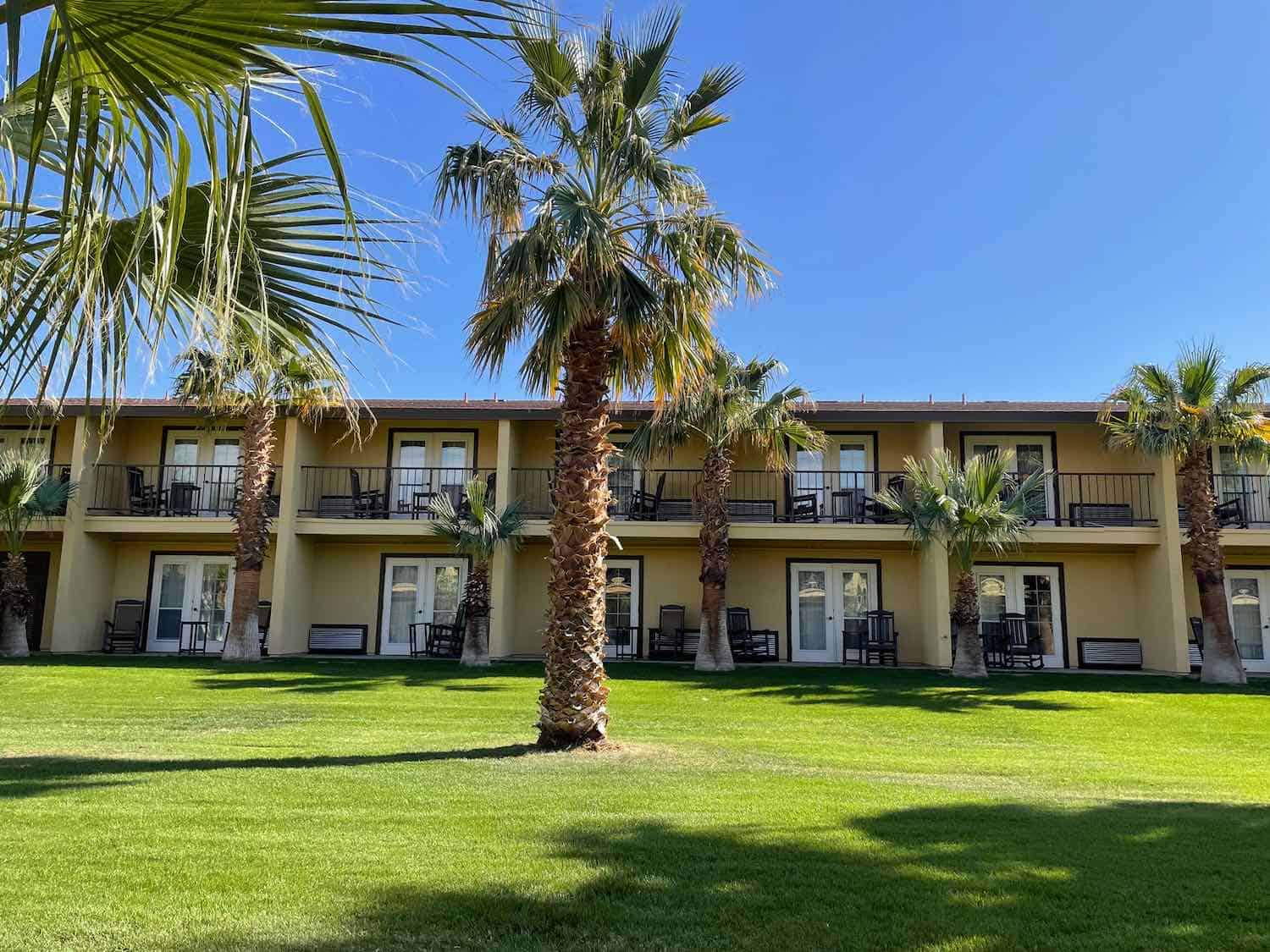
Hotel choices are either the Inn at Death Valley, formerly the exclusive escape for Hollywood elites, or the 224-room Ranch. We chose the less fussy hotel-like rooms at The Ranch at Death Valley.
The resort atmosphere includes green lawns, a spring-fed swimming pool, playground area, tennis, golf course, riding stables, and bike rentals. Expect high prices in the middle of nowhere, but not as dear as the Inn, where room rates start around $500 per night.

You’ll find a plaza with a few shops and a General Store that sells souvenirs, drinks, and plenty of food. The Last Kind Words Saloon, an atmospheric restaurant, will meet your dinner needs. The outdoor seating area becomes a gathering spot in the evening, a lovely place to sip drinks around the fire pits.
Day One of 2 Days in Death Valley
Zabriskie Point
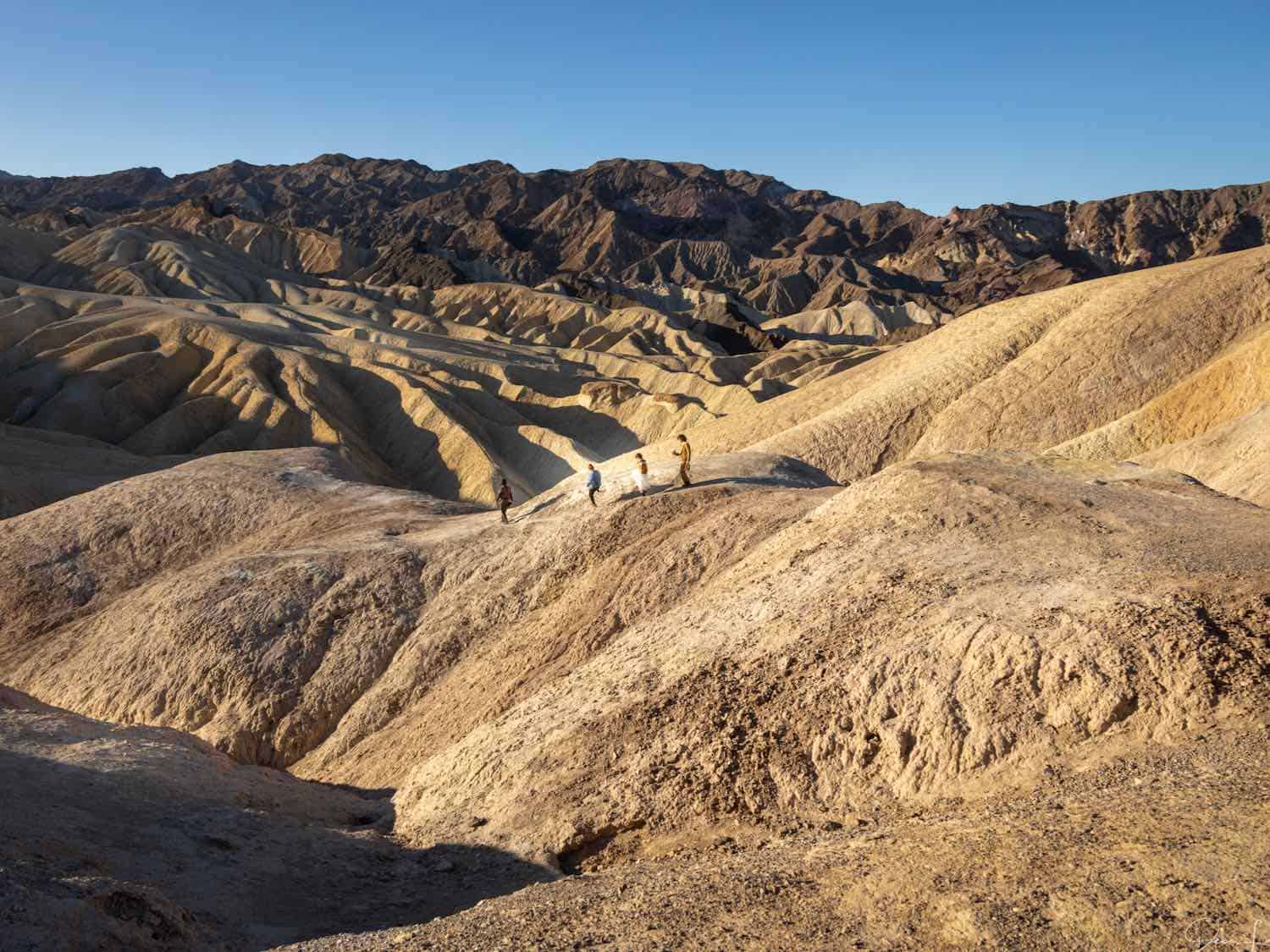
The following morning, we drove to Zabriskie Point for sunrise. No surprise, the easily accessible area near Furnace Creek remains the most popular in the park. You walk up to the overlook and find variegated mounds, called badlands, overlapping one another.
Other sections display deep erosion patterns. Look for layered shades of coral, peach, and salmon forming a mysterious grand vista with snow-capped peaks in the distance.
FYI: the wind picks up as you near the top of the path. No trees grow in Death Valley to buffer the stiff breezes. Those who are interested will find a hiking trail.
Artist’s Palette
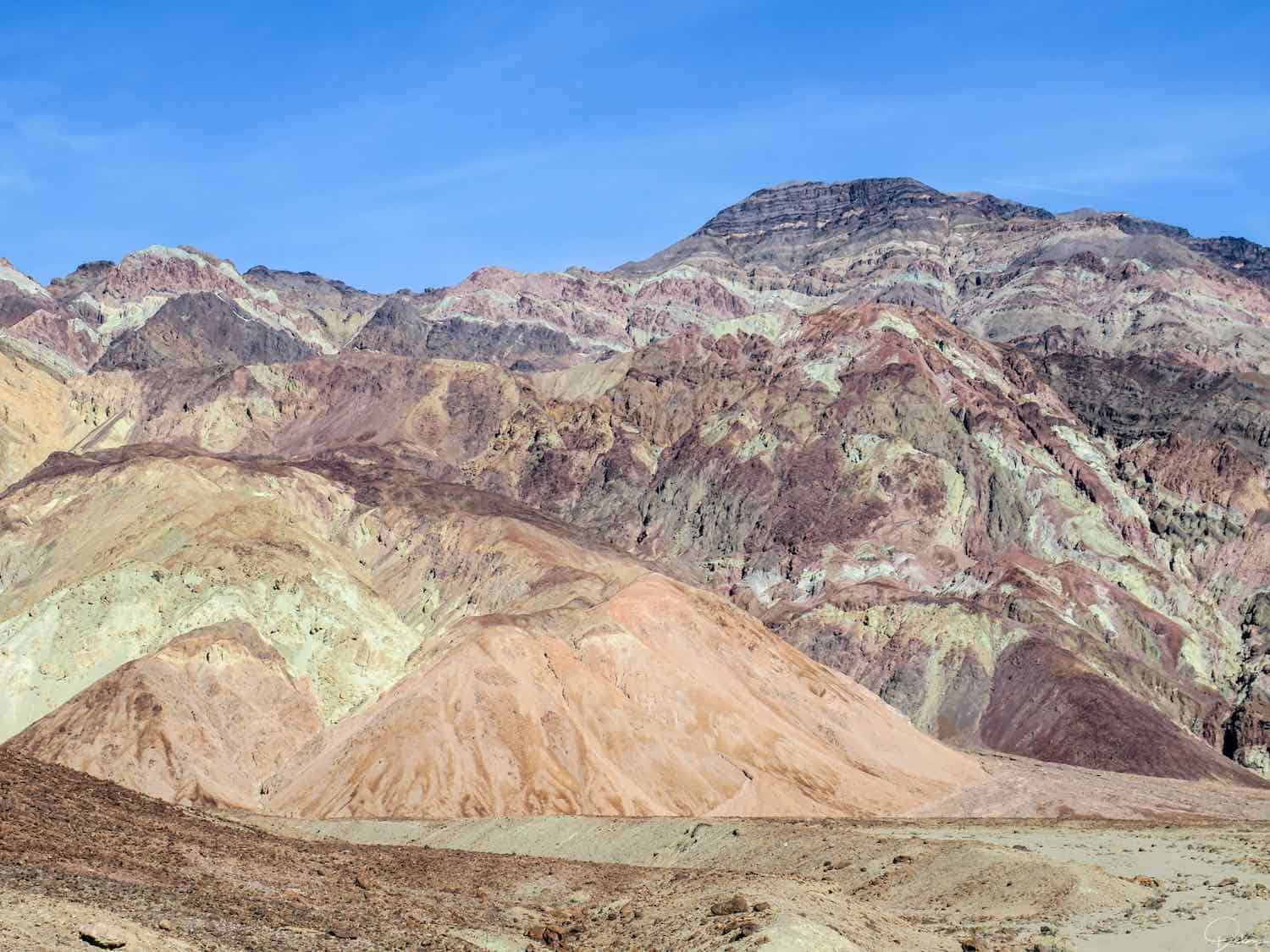
On our way to Badwater Basin, we passed the Artist’s Palette loop entrance– in the Black Mountains on the eastern side of Death Valley National Park. The colorful, majestic peaks look like a painter dabbed a watercolor-filled brush across the surface.
The colors are caused by the oxidation of various metals and minerals embedded in the rock. We returned another afternoon to see sunshine dance upon the vivid terrain. We also saw a few flowering bushes.
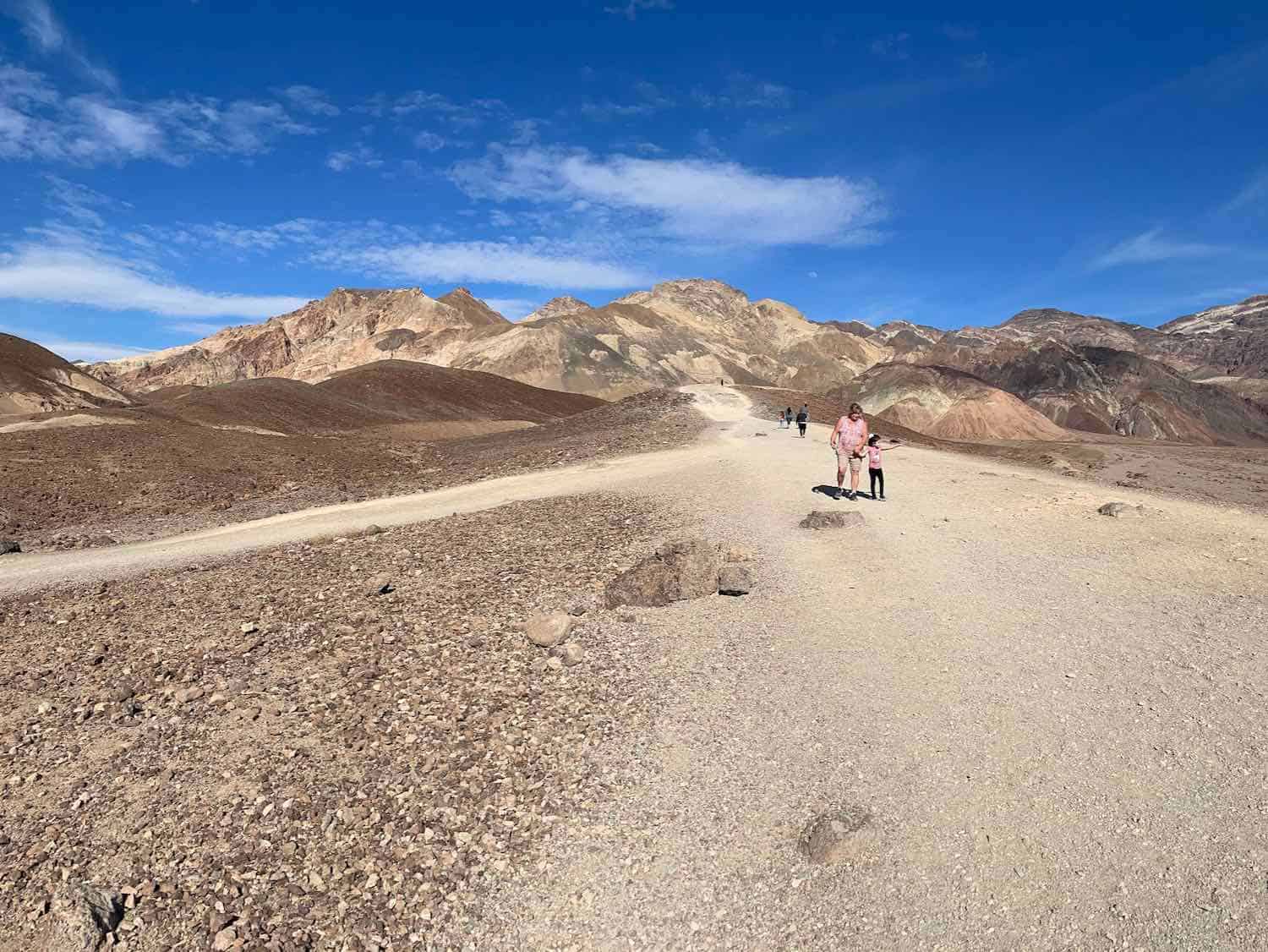
The nine-mile loop incorporates two parking stops and hiking paths. Don’t miss this area, even if you just hike up the first hill.
Badwater Basin
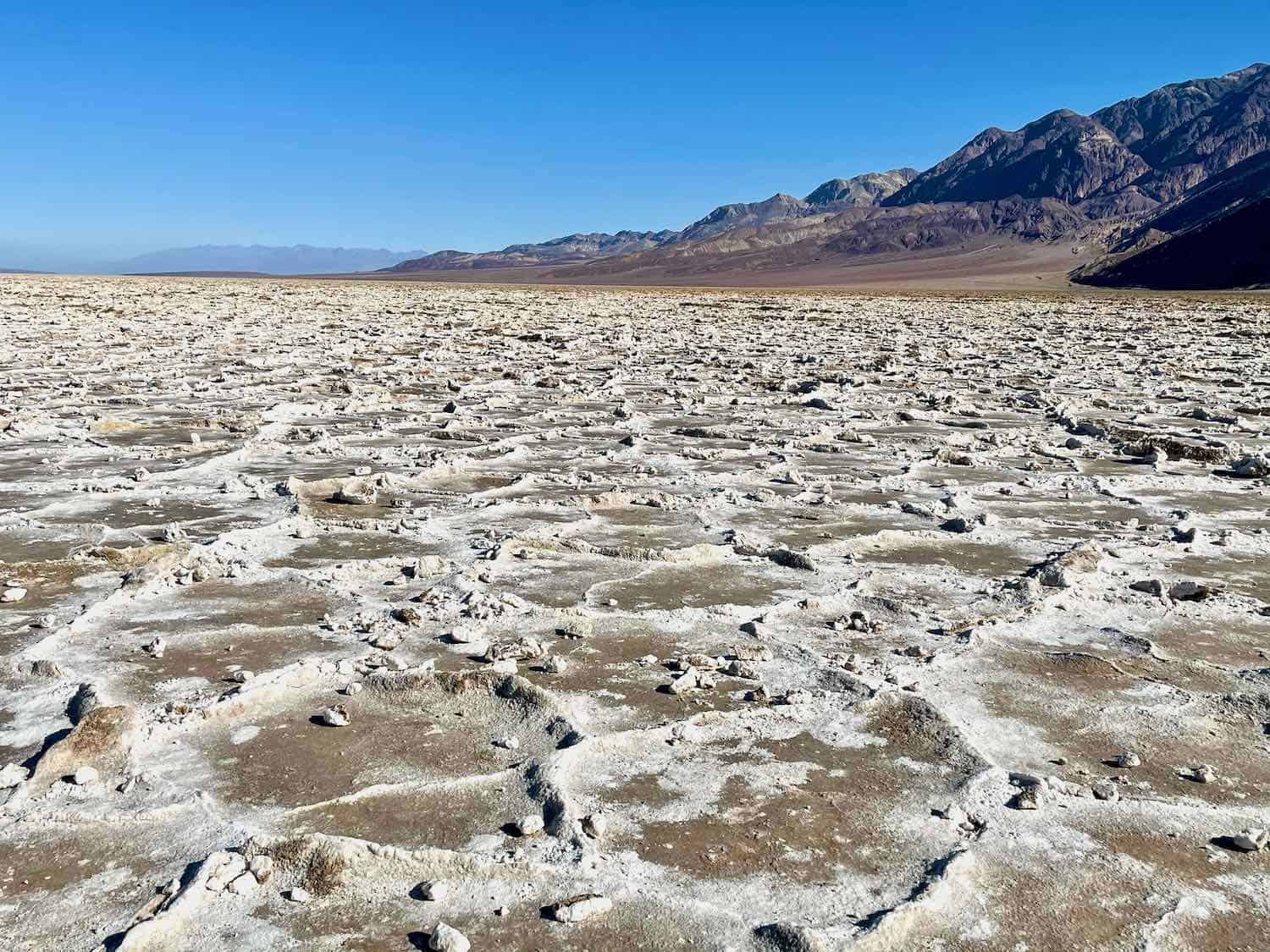
We soon arrived at Badwater Basin, the lowest point in North America, 282- feet below sea level. Salt crystals form on this 200-square mile stretch of land called a salt pan.
The polygon patterns beguile and change with weather conditions. If you are lucky enough to experience rain during your visit, the basin becomes particularly photo-worthy. On rare occasions, it floods.
I walked out, nearly a mile, to where the white crystals covered the entire salt floor. This 360-degree view mesmerized me; it looked like giant spiderwebs were stretching to infinity.
While Badwater Basin draws crowds, and the observation platform remains one of the most visited places in Death Valley, walking out provides a view all to yourself. Make an effort and take the time for the long walk, but be careful of the uneven surface and carry water.
Devil’s Golf Course
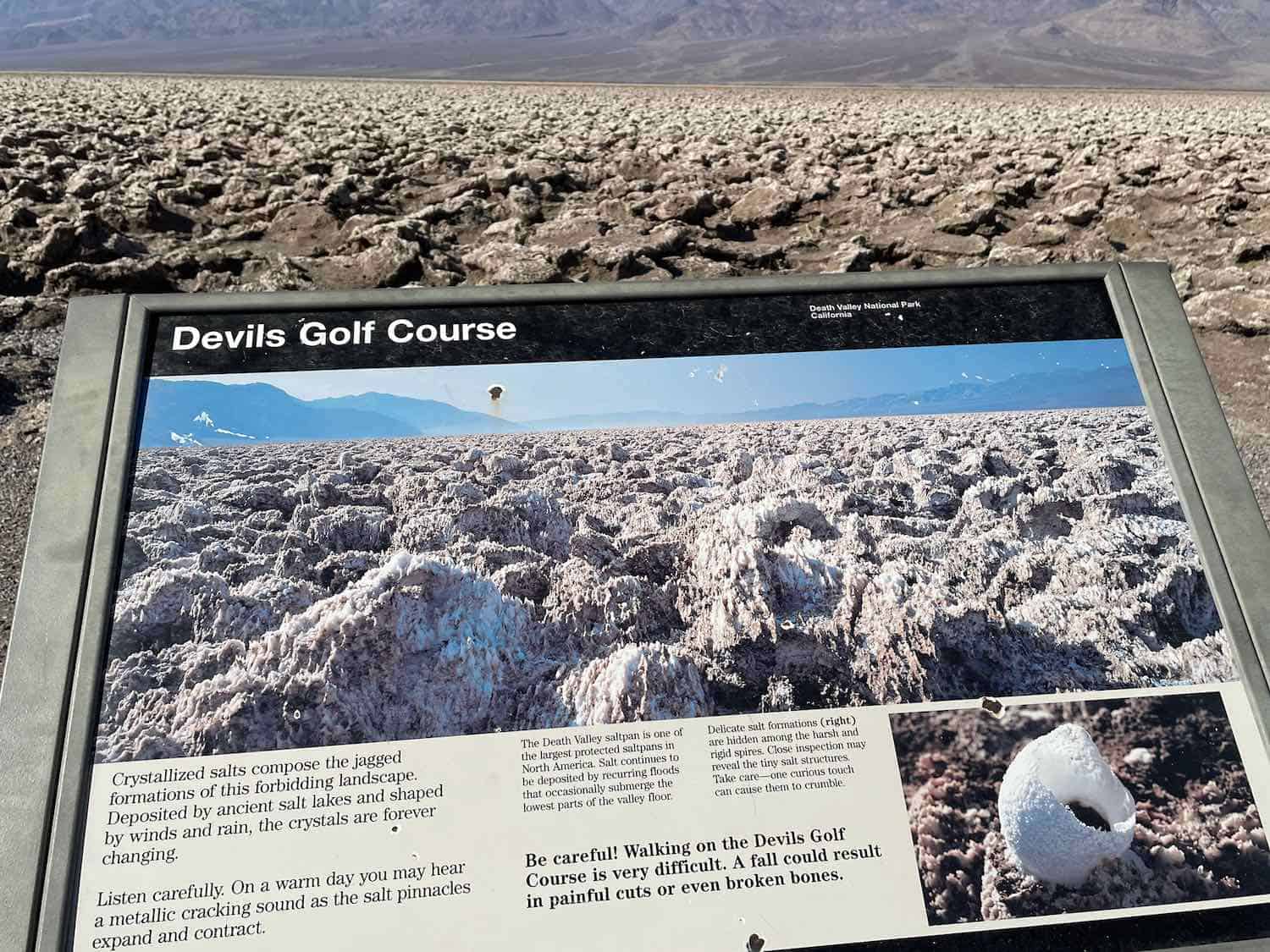
From Badwater Basin, we drove to the Devil’s Golf Course, a hostile rocky and salty landscape that would prove difficult even for walking. If your 2 days in Death Valley are limited, skip this one.
We were hungry, so we returned to the hotel for lunch and reviewed the park maps to make plans. Even in late March, we avoided mid-day activity.
Dante’s View sunset
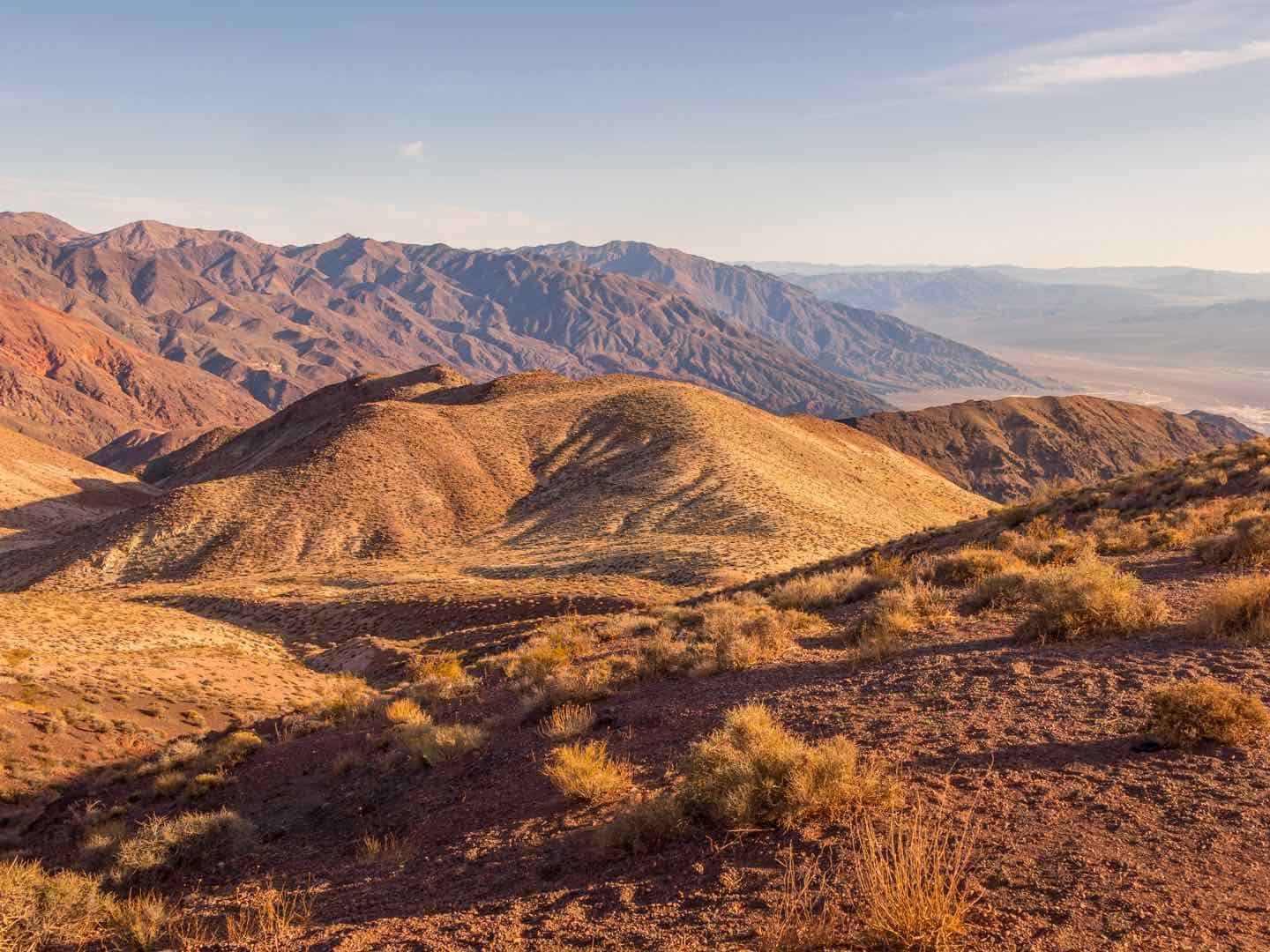
To photograph the evening sunset, we set off on a long drive up switch-backs to Dante’s View, the highest point in the park. Visitors peer a mile down and see the fringes of mystical-looking Badwater Basin.
From this vantage point, the salt looks like fog. The humbling mountains in the distance surround the summit and become a dramatic backdrop at twilight.
I was hoping for a glorious sunset, but Mother Nature didn’t cooperate. However, I felt her ominous power of darkness on the 45-minute drive back. You don’t want to get a flat tire or breakdown out there.
Boomer Travel Tip
Start planning your next national park trip with our National Park Travel Planner!
Day Two: Death Valley Itinerary
Mesquite Sand Dunes
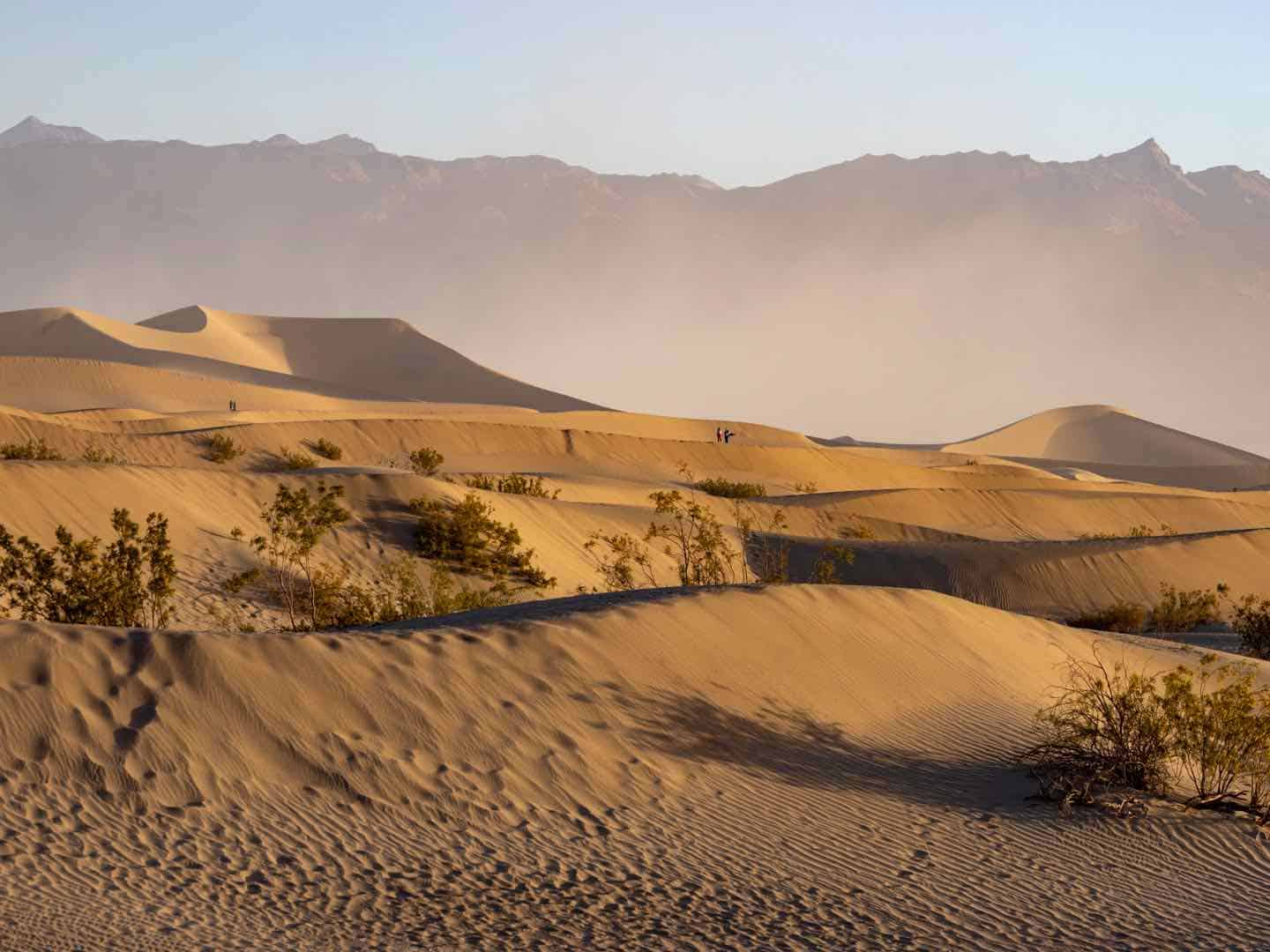
Early the next day, we ventured 20 miles to the Mesquite Sand Dunes. Many photographers are drawn to the dunes for sunrise and sunset shots.
Here, a wave-like stretch of sand formations ripples against more surreal mountain ranges. Walking proves difficult in the soft dunes, but the place begs for exploration.
Look for windblown striations, strange freeform patterns, and small mesquite trees. Do watch your bearings; it is easy to get turned around within the dunes.
Also, watch out if the sand starts to blow; the scene is breathtaking but stings! We liked it here so much, we returned on our final morning.
The Inn at Death Valley
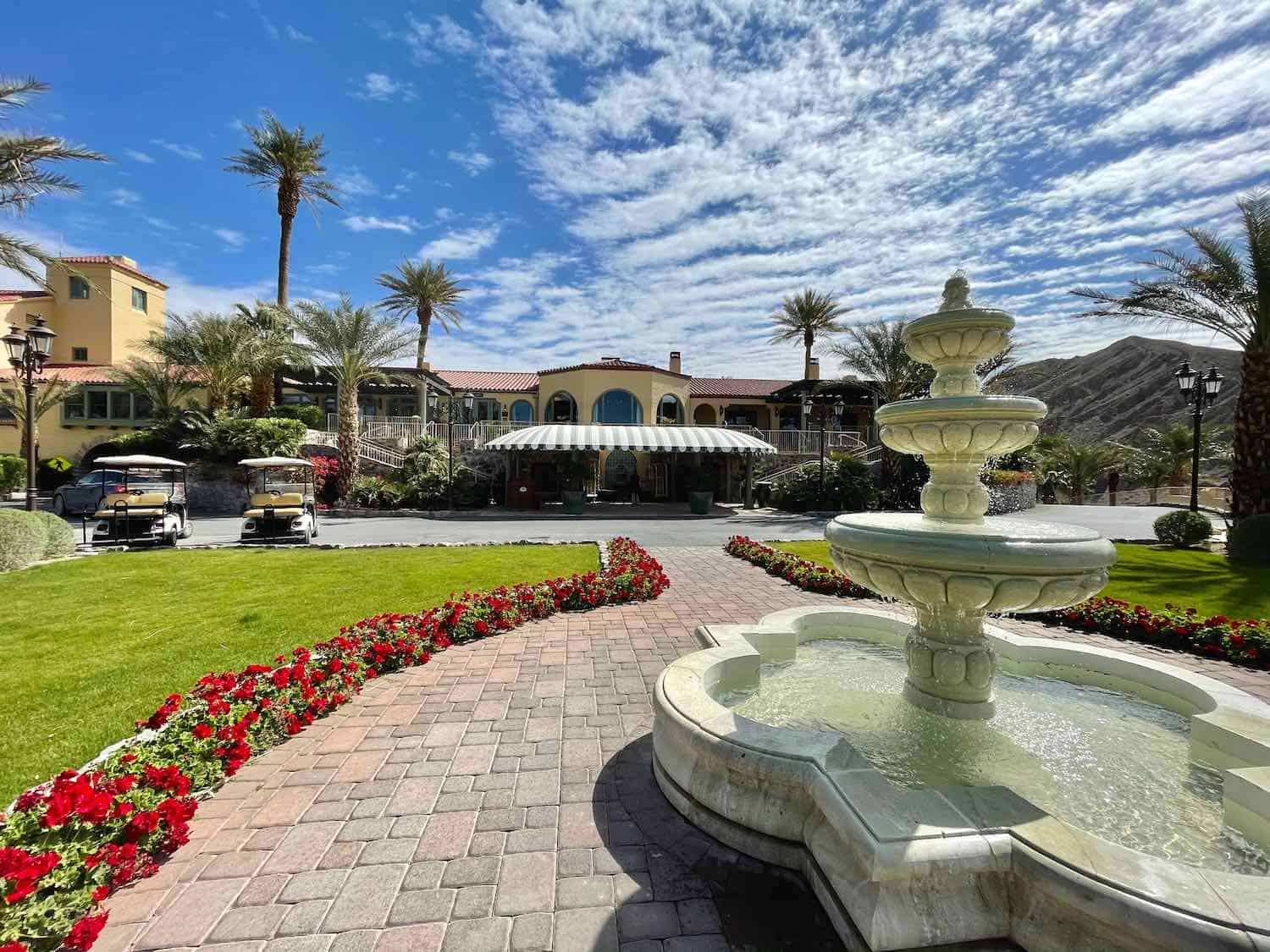
We wanted to check out the grounds and lobby of the premier Inn at Death Valley. No surprise, the luxury hotel doesn’t disappoint if your budget allows it.
Needless to say, we wished we could have indulged in the guest-only dining rooms with fantastic views for morning coffee and evening cocktails. The restaurant operates from mid-October to mid-May, but you need advance reservations.
Harmony Borax Works
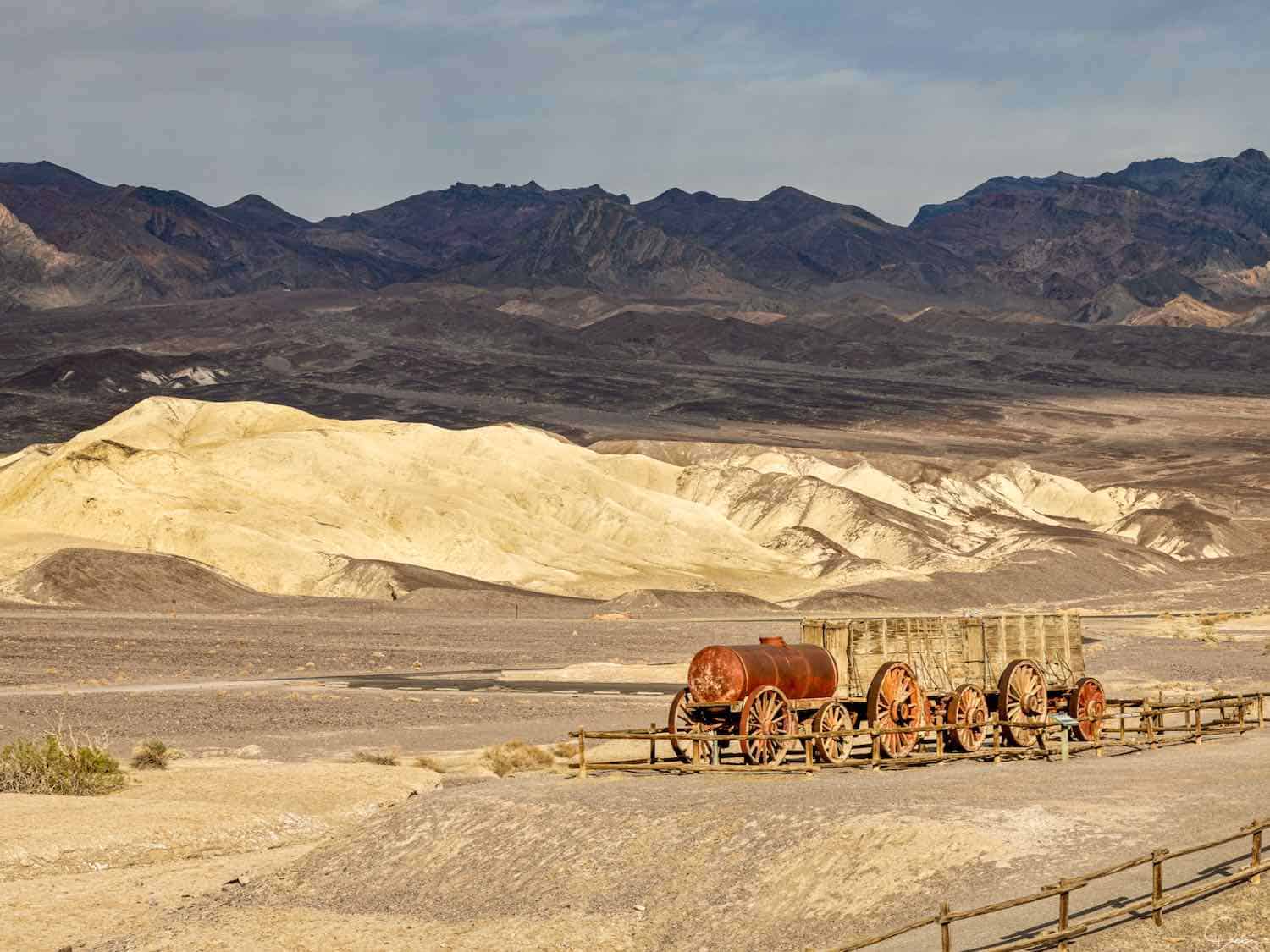
The Harmony Borax ruins, an outdoor museum, brought an explanation to the 20-mule team advertisements. A team of 20 mules was needed to carry a shipment.
The mineral, a compound known as sodium borate, was formerly used as laundry soap and whitener. The mine operated from 1883 to 1889, but hauling the loads became too costly and the work conditions unbearable.
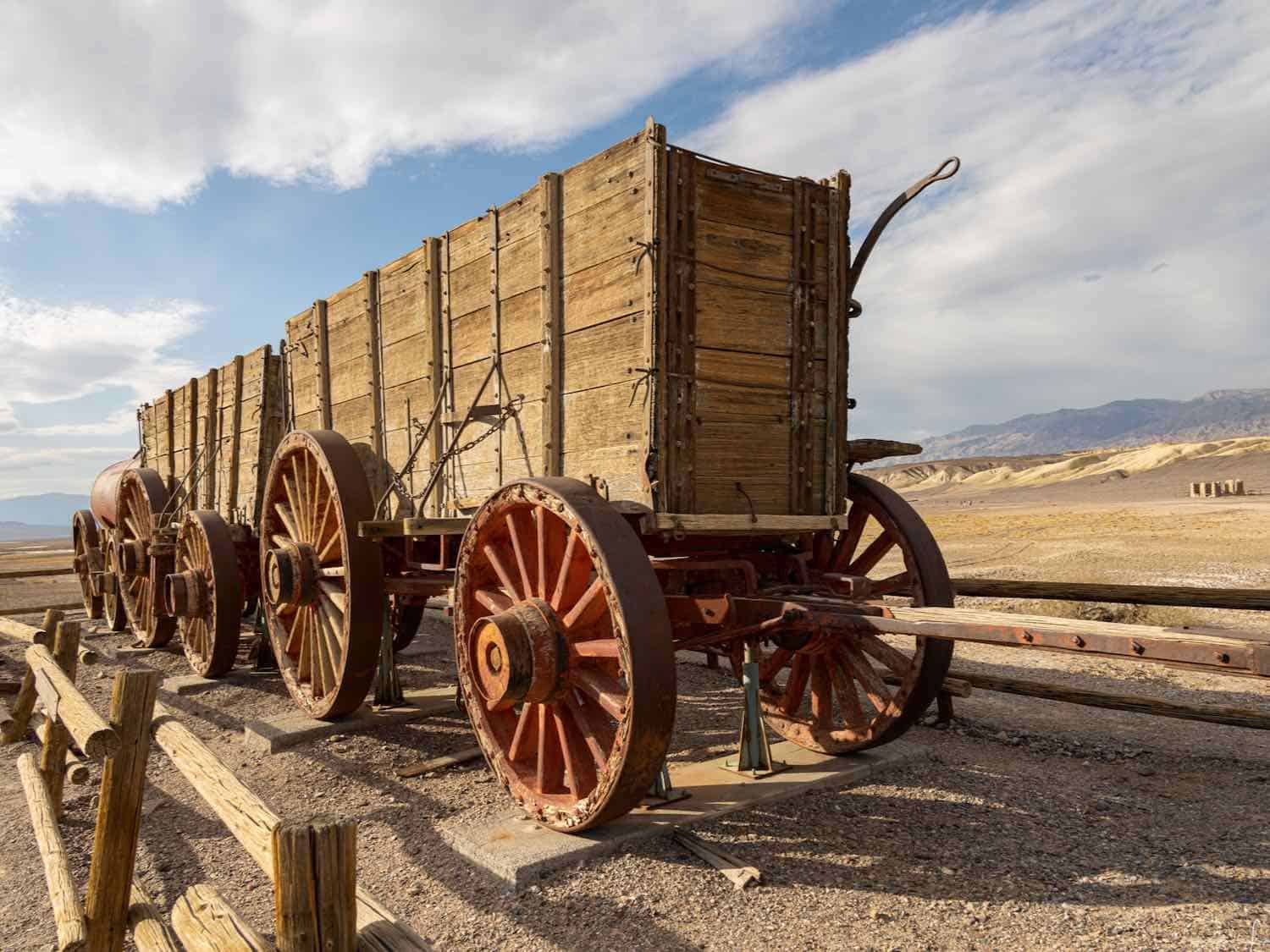
On display, you’ll see an old cart and the 1,200- gallon water tank that the mules pulled 165 miles across the desert. You can walk around reading the signage in about half an hour; I found it interesting and worth the stop.
You might consider returning to this area after dark for stargazing. Death Valley ranks as a certified Dark Sky area for those interested in astronomy and astral photography. Rangers sometimes lead night-sky outings.
20 Mule Team Canyon
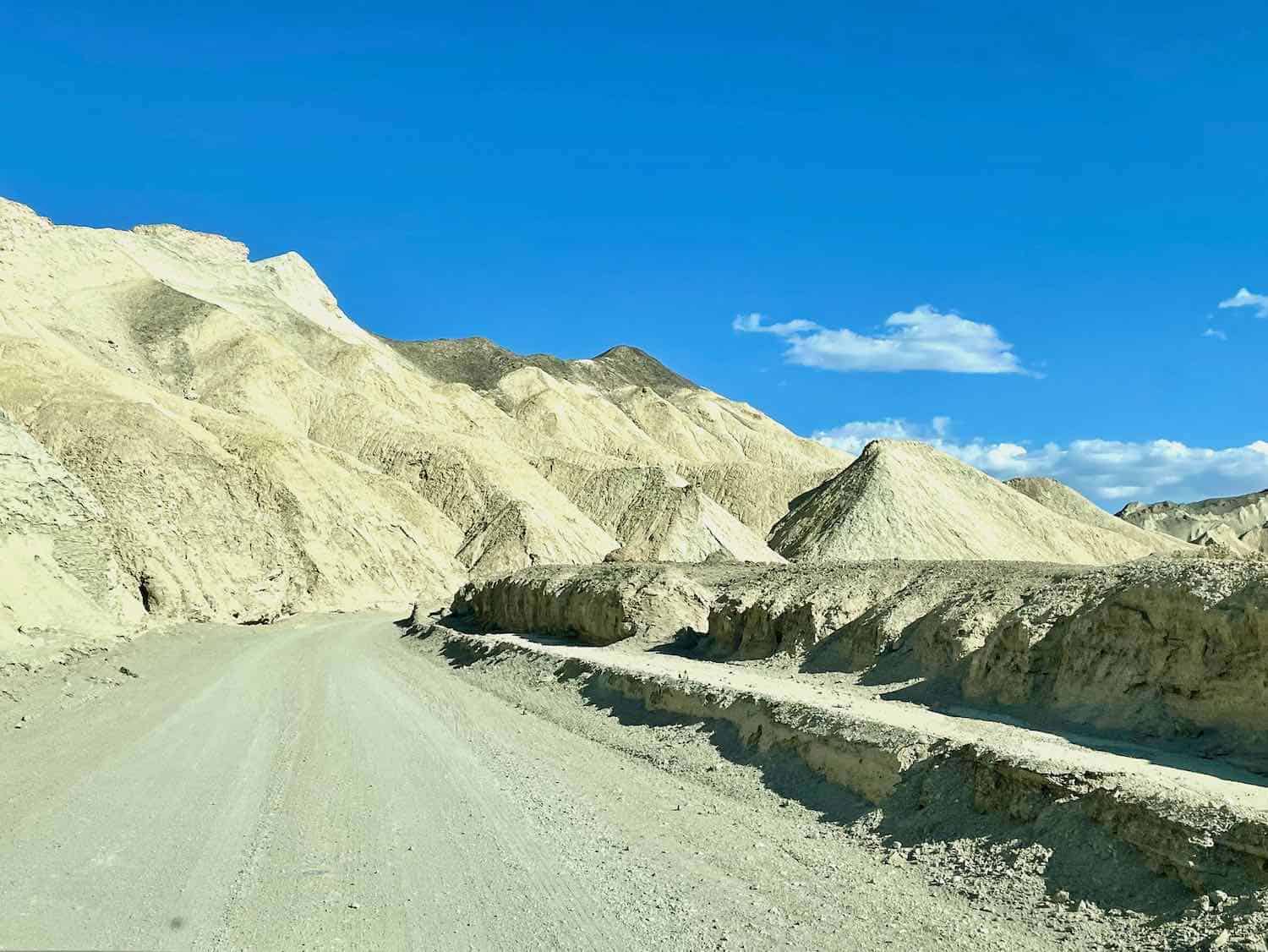
We also drove through the Twenty-Mule Team Canyon somewhat near Zabinski Point. This deserted trail felt like a real Indiana Jones adventure. The road twisted through narrow whiteish-beige canyons and multi-colored Badlands, the site of the first borax plant. It’s not far from Furnace Creek, but somehow a lot of folks miss it.
Ubehebe Crater
We started off to see Ubehebe Crater, another highlight, in the park’s northwestern corner. But, we didn’t realize it lies 60 miles from Furnace Creek.
Partway there, we decided we might not have enough gas, so we were forced to turn around. FYI: cellphones and GPS devices don’t work well within the park, so take my word for it and be mindful of your gas tank. There is only one fuel station at Furnace Creek, and it sells petrol at excessively inflated prices.
The Racetrack
If you make it to Ubehebe Crater, it’s also worth checking out “the racetrack,” which is home to the famous Death Valley moving rocks. These rocks are commonly referred to as one of the most mysterious natural occurrences in the world.
The large boulders move during rare freeze-thaw conditions, leaving slug-like trails in the landscape crust. I was very disappointed to miss them. Also in this area is Scotty’s Castle, but unfortunately, this site continues to be closed due to flood damage.
Return to Zabriskie Point
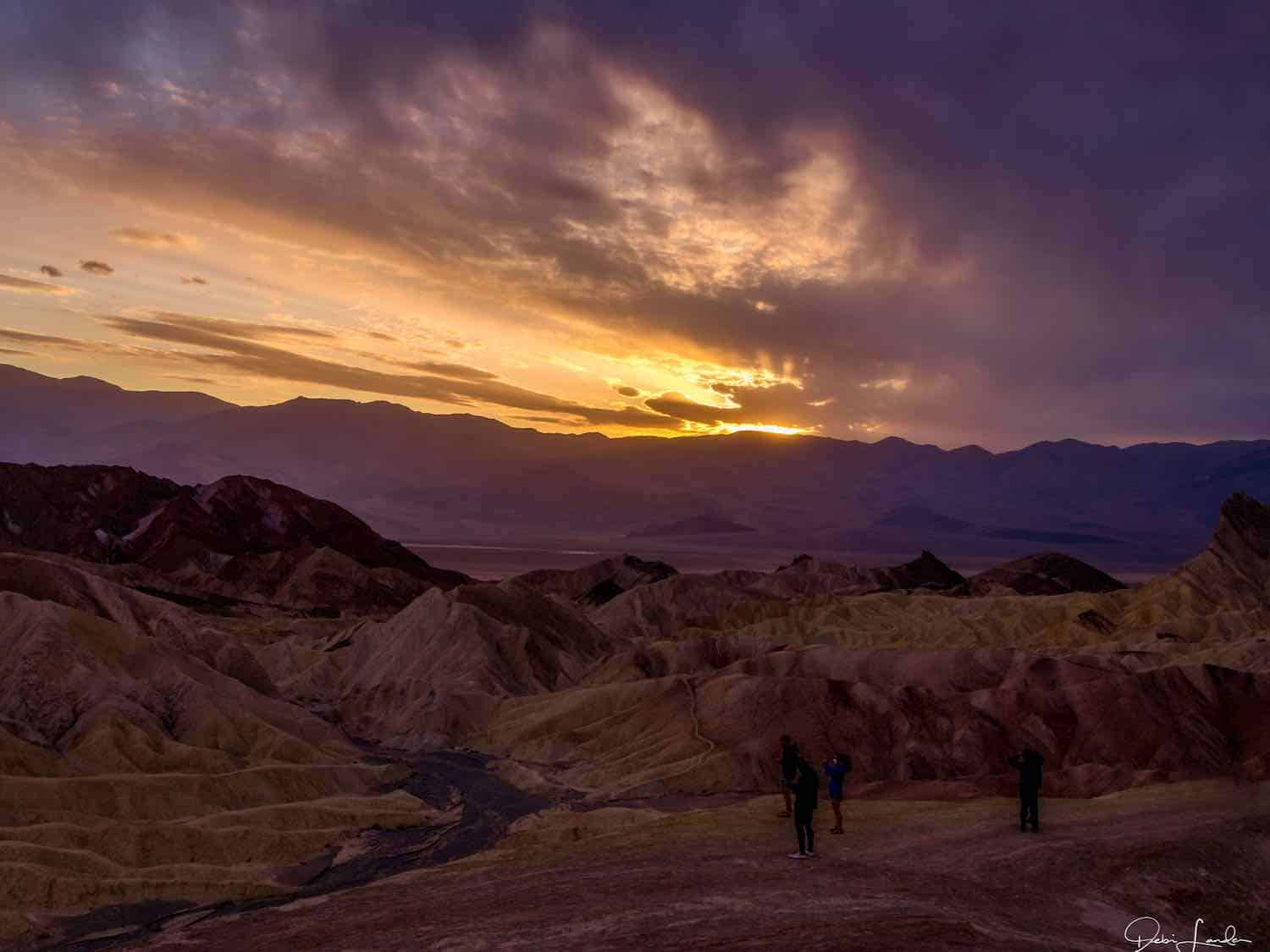
On our final evening, we decided to return to nearby Zabriskie Point for sunset. Once again, Mother Nature didn’t do her best until the afterglow. We almost left, but I’m so glad we lingered.
Our return trip (about two hours) to the Las Vegas airport was quicker using Route CA-160 and NV-190. Once you pass Pahrump, Nevada (yes, that is an actual city), the rock formations start disappearing, and you eventually return to civilization.
If I have anything negative to say about Death Valley, it would be that the park’s sites of interest rest so far apart. Still, I marveled at the otherworldly landscapes and vastness of the desert. I found the rugged topography fascinating, but some areas felt eerie, lonely, and abandoned.
Final Tips for visiting Death Valley National Park
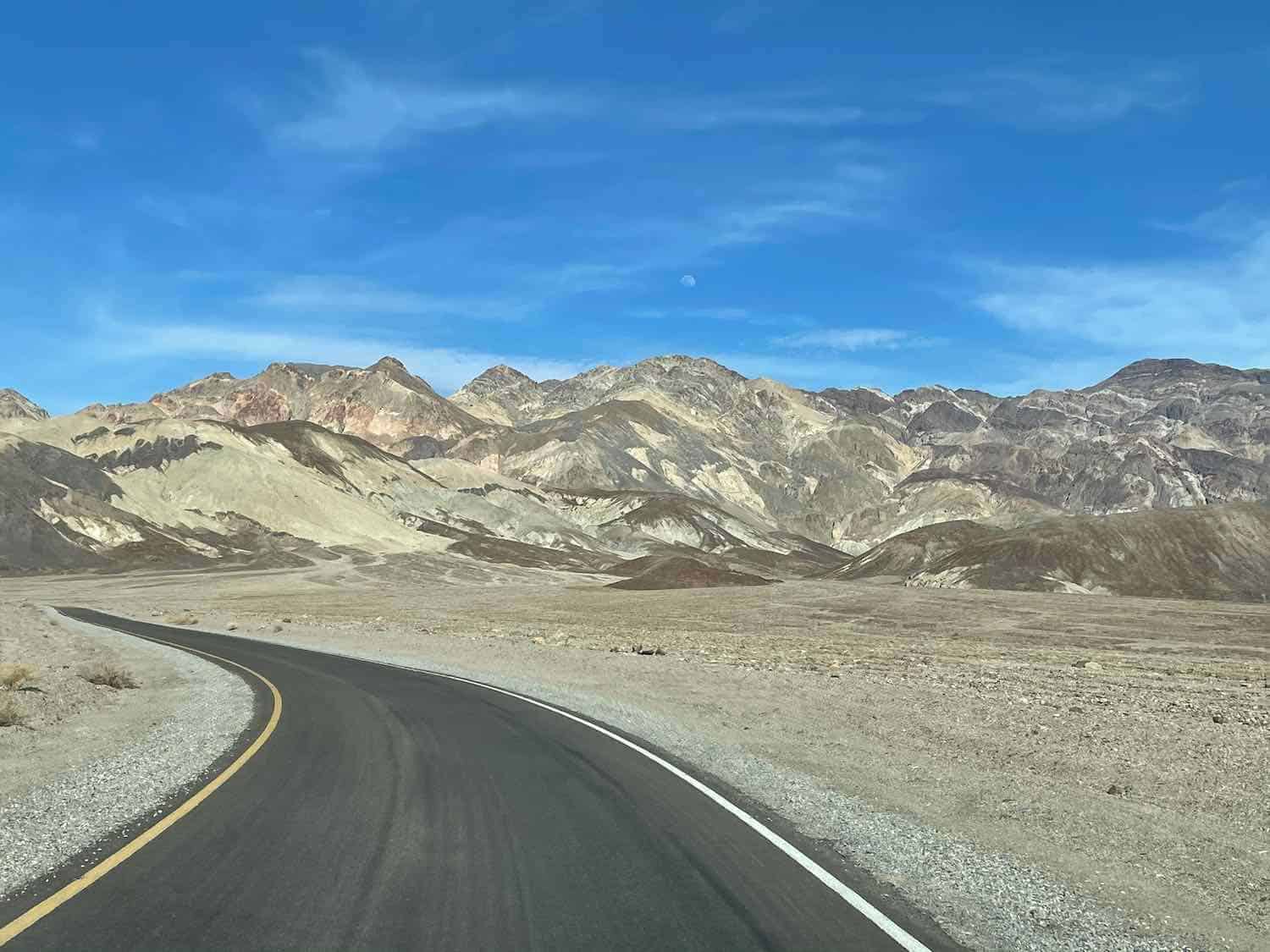
Visitors need to spend a minimum of 2 days in Death Valley to appreciate the curious wonders of this sunny desert. If you get lucky and visit after a rare rainstorm, you’ll be rewarded with even more vibrant colors and possibly one of the most beautiful wildflower displays in the world. Photographers are drawn to return, but most people find one visit is enough.
Why not turn this into a week-long adventure by adding this two-day road trip from Las Vegas to the itinerary. That way, you’ll return home having seen Hoover Dam and Valley of Fire State Park, in addition to Death Valley.

